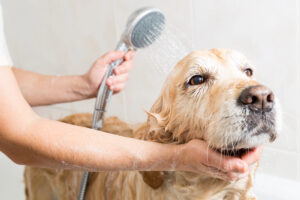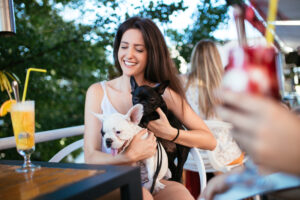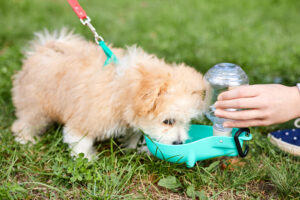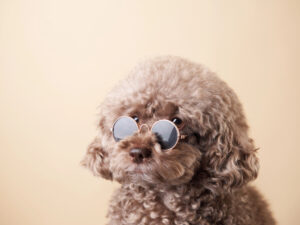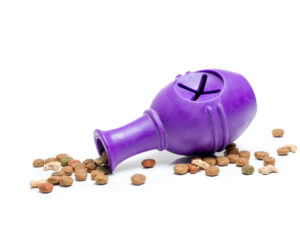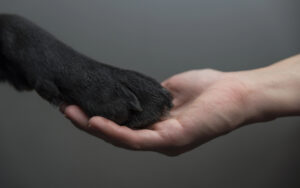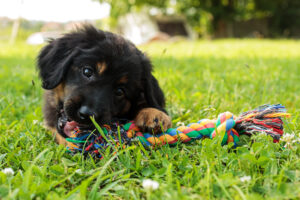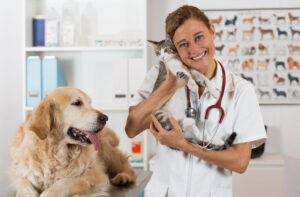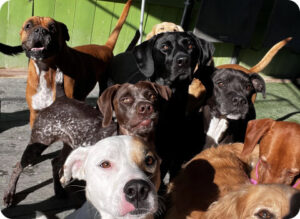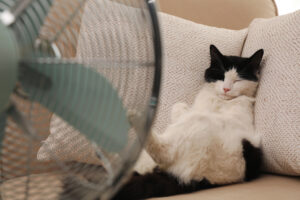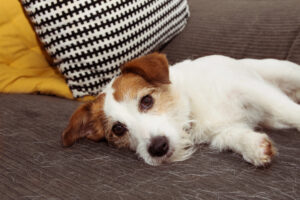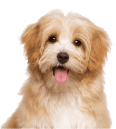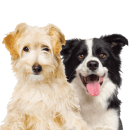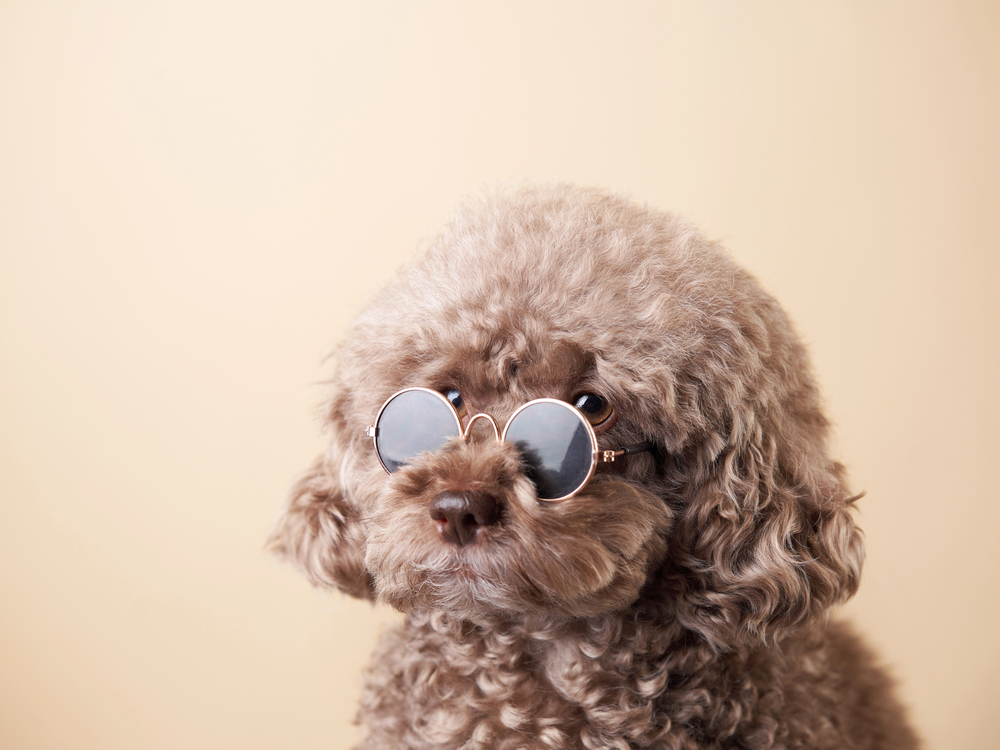
How to Help a Dog With Glaucoma See Better in Low Light
If you’re looking for how to help a dog with glaucoma see better in low light, the good news is that there are many ways to make life easier for your pet.
With the right care, treatment, and environment, dogs with glaucoma can still enjoy comfort and confidence at home. Gentle lighting, clear pathways, and regular veterinary support can go a long way in helping your dog see better and feel secure, even when the lights are dim.
Key Summary:
- When you notice signs of vision issues, have your pet evaluated by a veterinarian to protect your dog’s vision and comfort.
- Soft, steady lighting and clear pathways make it easier for dogs to move around in low light.
- Nutritious foods and vet-approved supplements can support long-term eye health.
- Consistent routines and gentle guidance help your dog stay confident as their vision changes.

Boarding Clients!*Discount does not apply during holiday/peak rate periods.

What is Glaucoma?
Canine glaucoma is an eye condition caused by a buildup of aqueous fluid that raises intraocular pressure (often called a dog’s eye pressure), damaging the optic nerve and leading to partial or total vision loss. This pressure, known as intraocular pressure, affects how fluid drains from the eye and disrupts normal vision.
In healthy eyes, fluid (called aqueous humor) flows in and out smoothly to nourish eye tissues. When that balance is disturbed, the pressure increases, putting stress on the optic nerve.
Over time, this can cause pain and irreversible vision problems. Glaucoma can affect one or both eyes and may develop suddenly or gradually, depending on the type.
There are two main forms:
Primary glaucoma, which is often hereditary and seen in breeds like Beagles, Cocker Spaniels, and Basset Hounds.
Secondary glaucoma, which develops as a result of another eye issue, such as injury, infection, or inflammation.
How Glaucoma Affects a Dog’s Vision
Glaucoma damages the optic nerve, which carries visual information from the eye to the brain. As pressure builds up, nerve cells start to die, and your dog’s vision begins to blur or fade, particularly in low light.
Recent studies also show that inflammation can worsen glaucoma by blocking normal fluid drainage and speeding up nerve damage, which makes vision loss progress faster.
Dogs with glaucoma often struggle to adjust when the lighting changes from bright to dim. This happens because glaucoma reduces their ability to detect contrast and process light efficiently.
Over time, they may bump into furniture, hesitate in dark rooms, or appear disoriented during evening walks. Low light conditions make things even harder for a dog with glaucoma because the retina, which controls light sensitivity, becomes less responsive under pressure.
Even though their other senses, like smell and hearing, remain sharp, they’ll need extra help to navigate safely and confidently.
Signs Your Dog May Have Glaucoma
Glaucoma can progress quickly, so spotting the early signs can make a big difference. If you notice any of these symptoms, schedule a vet visit right away.
Red or cloudy eyes: The whites of the eyes may appear bloodshot or hazy.
Bulging or enlarged eye: Increased pressure can cause the eye to look swollen or pushed outward.
Squinting or excessive blinking: Your dog may close one eye often due to pain.
Rubbing the face or pawing at the eyes: A clear sign of discomfort or irritation.
Sudden vision loss: Dogs may bump into objects or seem unsure of their surroundings.
Light sensitivity: Bright light may cause your dog to flinch or avoid looking up.
Behavioral changes: Lethargy, whining, or irritability can indicate ongoing eye pain.
Glaucoma isn’t always easy to notice in its early stages, so even mild changes in your dog’s eyes or behavior are worth checking out.

How to Help a Dog With Glaucoma See Better in Low Light
To help a dog with glaucoma see better in low light, start with proper veterinary treatment to control eye pressure, then create a calm, well-lit environment that supports their comfort and confidence. Gentle lighting, consistent furniture placement, and a nutrient-rich diet can all make a big difference in how well your dog adapts to changes in vision.
Here are some simple steps you can follow at home.
Step 1: Get Professional Treatment Right Away
Glaucoma is a serious condition that can lead to permanent vision loss if not treated promptly. The first and most important step is to visit your veterinarian for a proper diagnosis and treatment plan.
Medication: Your vet may prescribe eye drops to reduce intraocular pressure, improve fluid drainage, or lower fluid production inside the eye.
Pain management: Oral pain relievers and anti-inflammatory medications can help keep your dog comfortable.
Surgery: In more advanced cases, procedures like laser therapy or shunt placement may be needed to control pressure.
Ongoing care: Regular checkups are essential to monitor your dog’s eye health and adjust treatment as needed.
Step 2: Make the Home Easier to Navigate at Night
Dogs with glaucoma rely more on scent and touch when their vision weakens. Small changes in your home can make a big difference in helping them move safely and confidently.
1. Use Gentle, Ambient Lighting
Soft, warm lighting helps your dog adjust more easily between light and dark spaces.
- Add nightlights in hallways or near water bowls.
- Avoid bright spotlights or sudden light changes that can cause discomfort.
- Keep lighting levels consistent in areas your dog uses most.
2. Keep Layouts Familiar
Dogs with limited vision depend on memory. Try not to rearrange furniture or move their food and water bowls.
- Keep daily items like toys and beds in the same spots.
- Guide your dog with gentle verbal cues when entering new spaces.
3. Remove Hazards
Clear walkways of clutter and make sure your dog has open paths around the home.
- Use baby gates to block off stairs or unsafe areas.
- Cover sharp corners or edges with soft padding.
- Keep cords, shoes, or small objects out of walking areas.
4. Add Contrast Cues
High-contrast items help dogs identify boundaries and objects more easily.
- Place light-colored mats under dark furniture or food bowls.
- Use contrasting rugs to mark doorways or steps.
- Add tactile cues, like textured mats, near entrances or sleeping spots.

Step 3: Support Eye Health Through Nutrition
What your dog eats can play a big role in eye health and overall well-being. A diet rich in antioxidants and key nutrients may help protect the optic nerve and slow vision loss.
Antioxidant-Rich Foods
Fresh, natural foods provide powerful eye-protecting nutrients.
Carrots: High in beta-carotene to support retinal health.
Spinach: Contains lutein and zeaxanthin, which help protect against light damage.
Blueberries: Full of antioxidants that reduce inflammation.
Kale: Promotes good blood flow to the eyes.
Supplements and Natural Remedies
Certain supplements can support long-term eye and nerve health, but always consult your vet before starting any.
Bilberry: May improve night vision and strengthen blood vessels in the eyes.
CoQ10: Helps protect the optic nerve and improve cellular energy.
Vitamin C and E:Reduce oxidative stress in eye tissues.
Astaxanthin: A strong antioxidant that supports retinal health.
Magnesium: Improves blood circulation and helps relieve eye pressure.
Step 4: Create Comfort and Confidence
Dogs with glaucoma can adapt surprisingly well when they feel safe and supported. By keeping their routine steady and their surroundings familiar, you’ll help them stay calm and confident, even as their vision changes.
Maintain Routines
Dogs with glaucoma rely on predictability. Keep feeding times, walks, and bedtime schedules as consistent as possible. Familiar routines help them feel secure and reduce anxiety caused by sudden changes.
Use Verbal Cues
Your voice becomes one of your dog’s best guides. Use calm, steady words or short commands to direct them around the house. You can also wear a small bell on your shoes or collar to let your dog track your movement through sound.
Add Scent Markers
Light scents can help your dog recognize certain rooms or objects. Dab a small amount of safe essential oil (with vet approval) on doorways or near their bed. Over time, these gentle scent cues help them navigate without relying on sight.
Avoid Stress and Bright Flashes
A peaceful environment makes a big difference. Keep noise levels low and avoid flashing lights, harsh lamps, or bright camera flashes that can irritate sensitive eyes. Calm, even lighting helps your dog relax and move more confidently.
Step 5: Monitor Progress and Stay in Touch With Your Vet
Glaucoma is a long-term condition that needs regular monitoring. Even if your dog seems comfortable, eye pressure can rise suddenly and cause pain or further vision loss. Make sure to keep up with scheduled veterinary visits so your vet can track changes early.
Between appointments, watch for signs like squinting, redness, or cloudy eyes. If you notice your dog rubbing their face, avoiding light, or acting restless, these may be signs that pressure is building again. Write down any changes in behavior or appetite to share at your next visit.
Ask your vet about home monitoring tools or apps that can help track medication times and symptom patterns. Staying consistent with treatment and communication ensures your dog gets the best possible care.
Finally, remember that your support makes a huge difference. With your attention, patience, and regular vet checkups, your dog can continue to enjoy life with comfort and confidence, even as their eyesight changes.
When to See a Vet Immediately
If your dog shows sudden signs of eye pain or vision loss, see a veterinarian right away. Glaucoma can cause permanent blindness within hours if pressure inside the eye rises too high. Immediate care gives your dog the best chance to preserve vision and avoid serious complications.
Warning signs can appear quickly and worsen fast. Look for symptoms like redness, cloudiness, swelling, or a noticeably bulging eye.
If your dog squints, paws at their face, or avoids light, these may be signs of high eye pressure. Emergency treatment can relieve pain and prevent irreversible damage, so don’t wait to make the call.

Living Happily With a Vision-Impaired Dog
Dogs are incredibly adaptable and can live joyful, active lives even with limited vision. With a few adjustments, you can help your dog stay safe, confident, and connected to you.
- Keep their environment consistent so they can move around by memory.
- Talk to your dog often so they can locate you by voice.
- Use textured mats to mark key areas like food, water, and doors.
- Encourage safe play and gentle exercise to build confidence.
- Offer extra affection and patience; your calm energy helps them feel secure.
Conclusion
Helping a dog with glaucoma see better in low light is about care, consistency, and awareness.
With early treatment, soft lighting, healthy nutrition, and small home adjustments, your dog can continue to live a full and comfortable life.
Regular vet visits and close attention to behavior changes will help you stay one step ahead of the condition.
Every act of care, whether it’s adding a nightlight, giving medication on time, or offering comfort, helps protect your dog’s well-being.
faqs
What causes primary or secondary glaucoma in dogs?
Primary glaucoma is usually hereditary and happens when the drainage angle in the eye doesn’t form correctly, leading to increased intraocular pressure. Secondary glaucoma results from underlying diseases such as inflammation, intraocular bleeding, or severe intraocular infections that block fluid flow.
How is acute and chronic glaucoma treated?
Acute glaucoma requires immediate medical treatment to lower the dog’s eye pressure and prevent sudden blindness. Chronic glaucoma, which develops slowly over time, is managed with oral medications, carbonic anhydrase inhibitors, or surgery to decrease fluid production and protect the optic nerve.
Can canine glaucoma be cured?
There’s no full cure, but early ophthalmology care helps preserve your dog’s eyesight. Treatments focus on controlling aqueous fluid buildup, keeping the intraocular pressure in a normal range, and preventing further damage to the optic nerve.
How can pet owners detect glaucoma symptoms early?
Early detection is key. Watch for clinical signs like redness, cloudiness, squinting, or eye swelling. Subtle changes in your dog’s behavior, such as bumping into furniture or pawing at the affected eye, may indicate developing glaucoma that needs immediate attention.




